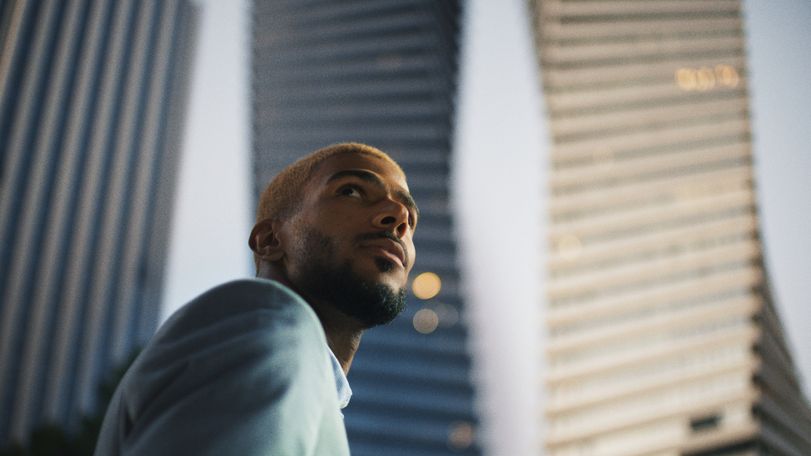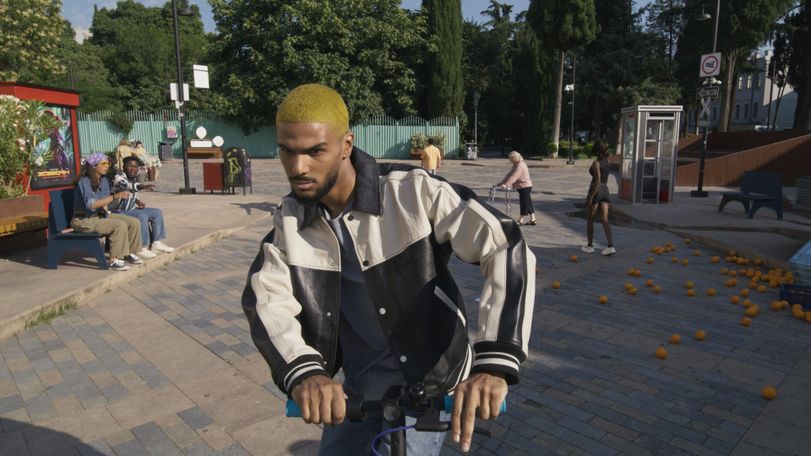
Is Virtual Production The Answer to Ad Sustainability and Cost Efficiency Or A Threat To Creativity?
Virtual production promises to meld creativity, cost-effectiveness, and eco-consciousness; is it the solution marketers have been waiting for?
03 October 2023
Faced with the unique challenges posed by the COVID-19 pandemic, film, television, and advertising companies explored new, high-tech virtual methods of getting the work done. Now virtual production is a powerful and evolving tool used by brands to tell their stories and engage with audiences in innovative ways, gaining more recognition as a viable alternative to traditional approaches.
It's not brand spanking new by any means. Just take a look at McCann's Lab13, which launched in 2019 to offer augmented reality (AR), virtual reality (VR) and mixed reality experiences. However, the evolution of game engine software, like Unreal Engine, greater availability of game and effects studios, and the initiatives of innovators seeking unique content have all played roles in the evolution of virtual production within the advertising space.
Seen as a transformative force, it brings cost savings, environmental advantages (reducing the need for armies of production crew to fly to far flung shoot locations, for example), and arguably an enhanced storytelling experience fuelled by new CGI techniques, all contributing to a shift in industry attitudes. But does using Virtual Production really enhance brilliant creative ideas or just replace real-world depictions with something very much second best?
We speak to industry experts about the potential benefits and pitfalls of VP's transformative powers.
Rachel Solomon, executive production director, Saatchi & Saatchi
Virtual Production is increasingly front of mind from the very beginning of campaign development with our clients. More and more clients are thinking sustainably, both in terms of their environmental impact, and their budgets – VP opens avenues that we wouldn’t be able to consider within traditional frameworks, and it’s great to see clients becoming more and more open to it as a way of making work.
There are so many advantages to virtual production. Creatively, it allows us to use a greater breadth of locations which budget and resources may not always allow. It facilitates shooting in-store setups at multiple points in the year, for example, as with VP we only need to build a store ‘set’ once, to then use again and again. It allows real flexibility for using celebrity talent too, who we get limited time with, but can shoot multiple setups and locations in a matter of hours in virtual productions.
The impact of using Unreal Engine in our recent gaming focused work with EE is a great example of these benefits. Rather than approaching it from a traditional CG perspective, we worked with Collective World to harness their capabilities in the space. We were able to create incredibly impactful assets that weren’t just single shots, but whole worlds that we could fly through, amend, adjust and render in a matter of moments. The whole process took a fraction of the time of a traditional CGI production.
Nick Rowland, executive creative director, VMLY&R
Anyone who’s seen Jon Favreau explain ‘The Volume’ for his Mandalorian series can’t help but be impressed. Like the humble green screen before it, it creates an opportunity to stretch our visual worlds like never before. For the right project and the right budget.
It’s a careful balancing act. Fewer sets, fewer materials, less transport, might reduce a production’s environmental impact, but people still need to travel to very expensive, and often abroad, power hungry studios.
But the fundamental question remains. What impact does it have on the quality of the work it enables? Many clients have hurriedly gravitated towards it as a cost saving measure, or a way to produce at scale across a large brand portfolio. Are these the right reasons for this production approach?
Virtual production changes the game in terms of what’s possible. With it, the craziest flights of imagination become entirely doable. New worlds, any season all year round, futuristic cities, travelling the world without ever leaving a studio. Surreal. Fantastical. Anything really is within reach.
It won’t be for every job. Traditional filming techniques still play a vital role in our industry. We can’t sacrifice the integrity of an idea just because of the ‘latest thing’. But used wisely, with vision and with the right idea, it’s a powerful tool for brands and marketeers to produce work just as entertaining and impactful as its big screen cousins.
In theory, VP should always work out more cost effective, unleashing the creatives to come up with bigger, better and more ambitious ideas.
Phil Greenwood, Dentsu Creative
Mark Graeme, executive producer, AMV BBDO's Red Studios
As a technique for the commercial filmmaking industry, virtual production is here to stay. From simple kitchen scene backdrops for dishwasher ads, through to full fantasy environments and everything in-between, clear creatives, producers and clients are finding ways to apply it to their output.
Many agencies or production companies have trialled it, but it now feels like it’s getting penetration and repeat use. That’s an exciting period as it means the learnings from early experimentation can be put into practice on new creative projects. The early nerves or scepticism starting to recede – What is it? How does it all work? Will it be any good? Why can’t we just get on a flight and shoot it? - are being replaced instead by confidence to dive in and play with the creative canvas it offers.
At AMV we started small – using VP on our Currys scripts for small cutaway scenes within traditionally filmed TVCs. On modest budgets that allowed creative teams the freedom for those scenes to be as creatively elaborate or disruptive as they desired – we took viewers to a Tokyo lab, a Parisian gallery, a football stadium, and even hung a colleague half-way up Yosemite, all from the comfort of a VP studio in Harlesden.
On Bupa we went further – constructing a full 90sec vignette and using VP, production design, and stock assets to showcase arctic, desert, city, and jungle scenes, all without a single flight being necessary. It was nice to take on that creative challenge of making beautiful-looking work and testing whether VP as a technique could deliver. And we’re now in talks with other brands across the agency on incoming projects.
For agencies interested in virtual production, I would encourage that curiosity. Speak to partners like Quite Brilliant, go and see a virtual production studio, review the good, bad, or average examples of work with your creatives or clients, or simply get inspired by how it’s used in feature films, music videos, and how it may apply to your next idea. It’s not right for everything, but make sure it’s a tool at your disposal and you don’t sleep-walk into a traditional approach.
And of course, use it as a primary weapon to reduce carbon emissions. With many of the VP studios running on renewable energy, reducing your need for flights or multiple units moves, a VP production will allow you to achieve a lot on a very small footprint.
Miranda Hipwell, chief client officer, adam&eveDDB
As with most production solutions, there is a time and place for virtual production. At adam&eveDDB our focus will always be on storytelling in the most impactful way whilst balancing specific brief requirements, budgets and always with an eye on sustainability. In some instances, this could mean virtual production is the best option, whereas for another brief virtual production could mean compromising on the potential success of a campaign. We have noticed clients are increasingly curious about the potential benefits of going virtual, such as sustainability and cost, but currently very few are opting for that route.
Pablo Bertero, chief innovation officer, Wunderman Thompson
Virtual production has rapidly transitioned from a novelty to a game-changer in the entertainment industry. Companies are embracing virtual production not only for its cost-saving potential and environmental benefits but also for its ability to enhance visualisation, simplify lighting, and create more realistic visual effects, ultimately delivering a superior storytelling experience. The era of the green screen is fading away.
This significant shift in the production workflow has seen pre-production take on a new role as the driving force behind the final product. Filmmakers now strive to create meticulously detailed virtual environments well in advance of shooting, revolutionising the traditional post-production process.
The integration of AI into virtual production introduces yet another substantial change in the workflow by bridging the gap between pre-production and production stages. GenAI's capabilities, including on-the-spot background changes, addition of elements, and real-time lighting control, imbue the production stage with dynamism and fluidity. This newfound flexibility presents a remarkable opportunity for the advertising industry, which has long pursued personalisation as a crucial objective.
Imagine an advertisement that dynamically adjusts its background to showcase different urban settings across various cities in Europe, specifically tailored to the viewer's location at the time the ad is served. Envision a car seamlessly navigating changing weather conditions in an advertisement, perfectly aligned with the viewer's local weather forecast. Just a couple of examples that demonstrate the immense potential for personalised experiences made possible through AI virtual production.
Used wisely, with vision and with the right idea, it’s a powerful tool for brands and marketeers to produce work just as entertaining and impactful as its big screen cousins.
Nick Rowland, VMLY&R
Phil Greenwood, managing partner in production, Dentsu Creative
“We open on a beach…”
If ever the opening line of a script excites creatives and account handlers and makes a producer's eyes roll, it's this.
But that was before a global pandemic, and the sudden advertising boom with virtual production.
Covid has a lot to answer for but making producers (and creatives) think smarter around how we film in multiple locations is definitely a positive that came out of an awful situation.
Don’t get me wrong, VP doesn’t work for all productions, but there is a certain kind of creative that works perfectly. Foreground objects, and backgrounds that don’t/won't be in focus are perfect.
Like most production companies, we are members of adgreen, and our industry has the ability to make changes that benefit the environment. The days of flying creatives, clients and suits around the world, can be a thing of the past. You can now shoot in 6 different cities, in the same day, with a tiny carbon footprint.
A couple of years ago, there weren’t many VP studios, but new ones are popping up all the time, making the technology more accessible and cost effective. (more companies = more competition = competitive pricing)
The best way to embrace this technology, I feel, is at the briefing stage talking to the creatives. Ask them if they’ve thought about VP. Can we write VP specific ideas? Do they even know VP is a thing, and that they can indeed write an idea that shoots across multiple locations? In theory, VP should always work out more cost effective, unleashing the creatives to come up with bigger, better and more ambitious ideas. See, everyone wins…
Whenever you embrace VP (and it is a ‘when’ not an ‘if’) you’ll realise that it can be such a force for good in our industry, and should be embraced, and it's something you should 100 per cent be chatting to your clients about. Because if you don’t, someone else will….










